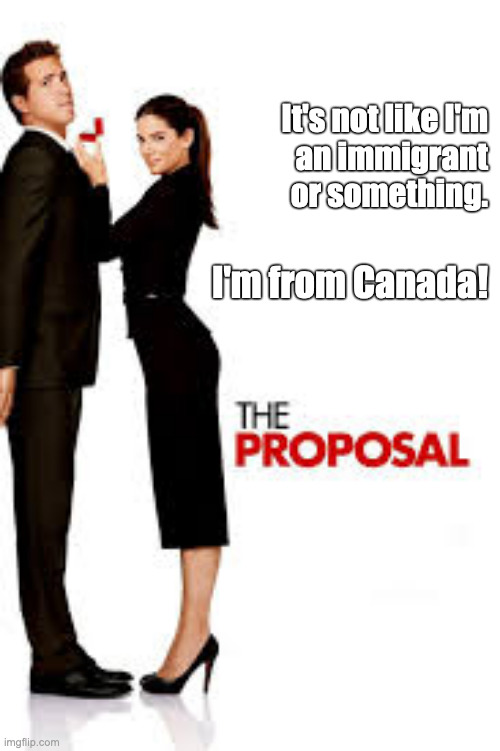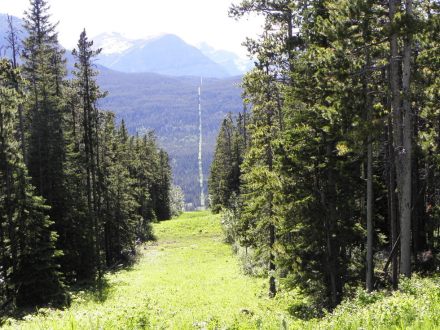In recent days, Donald Trump has talked about the need to send soldiers to the Canadian border and force US manufacturers to stop supplying Canada with PPE. Part of the reason this kind of rhetoric resonates among Americans (and it does…) is that it invokes the idea of a Canadian threat. While the idea of a Canadian threat might seem far-fetched in light of the close relationship between the two countries and the saccharine narrative of “the world’s longest undefended border,” US elites have always located threat in Canada. And if history is any guide, we should hold on tight, because things are almost certainly going to get worse.
* * *
In the period following the terrorist attacks of 9/11, US news outlets were consumed with uncovering evidence that implicated Canada as a haven for terrorists. The border itself came under sustained scrutiny for its apparent inability to keep Americans safe. In that context, US politicians and pundits framed Canada as a potentially catastrophic threat to US security, with several going so far as to issue calls for a militarized response to the 49th parallel.
* * *
Many scholars understand the notion of “threat” in terms of social construction. From this perspective, when think-tanks, media sources and government officials issue national security assessments that depict other peoples and places as threatening they are contributing to the social processes that reproduce national identity. Thus, rather than serving as objective descriptions of imminent danger, such assessments work to define the national self by positioning and constructing it in relation to any number of foreign dangers or “others.” While Canada does not function as a foreign “other” against which core aspects of American identity are constructed, it does play a supporting role in the broader social dynamics that construct American identity in relation to external threats.
Within US popular culture, Canada has long occupied a tenuous position of liminality – that is, a contradictory position of simultaneous belonging and exclusion. Popular and political discourse in the United States regularly scripts Canada as simultaneously part of and separate from the American self-conception. So, while US discussions and representations of Canada typically acknowledge Canada to be a foreign state, they also tend to question the certainty and relevance of that foreignness.
If this idea has never occurred to you, just consider how often US popular culture re-scripts Canada as the equivalent of a “51st state.” For example, the New York Times once claimed “The United States-Canada border was always sort of the class trip of foreign travel – novel, but non-threatening.” In a similar vein, a USA Today article from 2002 quotes a man whose wife thought of Canada as part of the United States: “My wife didn’t feel comfortable traveling post-9/11 out of the country, but she doesn’t consider Canada out of the country.” Time magazine also followed suit: “Before September 11th, the 5,525-mile stretch that separates the northern United States from Canada wasn’t considered much of a border – it was seen more as a formality designed to enhance the ‘international’ experience of US tourists.”
But this tendency to diminish or reject Canada’s foreignness goes well beyond newspapers; it is also a common trope in Hollywood. If you caught the Hollywood film The Proposal, you may remember Sandra Bullock’s imperious character exclaiming to her American boss, “It’s not like I’m an immigrant or something. I’m from Canada!”

And beyond news media and popular culture, this same tendency also finds regular expression in presidential speechifying. For example, in his speech to the House of Commons during his 1961 visit to Ottawa, JFK naturalized the Canadian-American partnership in terms of a marriage between an American groom and his Canadian bride:
Geography has made us neighbours. History has made us friends. Economics has made us partners. And necessity has made us allies. Those whom nature hath so joined together, let no man put asunder.
George W Bush adopted a similar approach while apologizing for his failure to thank Canada for its support following 9/11: “I didn’t necessarily think it was important to praise a brother; after all, we’re talking about family.”
* * *
During times of crisis, Canada’s liminal status transforms the country into a threat to US security. When the United States is menaced by a global threat or enemy, Canada’s potential for difference becomes exaggerated. Americans are able to glimpse within this difference traces of an otherwise external threat. This process is not about a fundamental reordering of US impressions of Canada whereby the country is redefined as somehow actively or intentionally hostile to US interests. It is, rather, a more subtle process in which Canada’s capacity for difference prompts Americans to understand how the country might unwittingly become a haven for threatening forces or actors. This grave situation is further exacerbated, however, by Canada’s liminal capacity for likeness. The popular impression that holds Canada to be virtually an extension of the United States implies that any trace of threat or danger in Canada is effectively inside the United States. Thus, instead of being understood merely as a potentially dangerous place where hostile threats might conceivably find purchase, Canada is recast as a conduit that funnels those threats directly into the US heartland.
This seemingly unlikely process, in which a loyal and benign ally is re-imagined through a lens of imminent threat, is explained in terms of the social processes involved in the reproduction of American identity. In serving as an essentially interior instantiation of a foreign threat, the Canadian liminar enables a more urgent scripting of American identity. The immediacy of the threat incites social actors to expunge lingering traces of difference within the nation and demand uncompromising vigilance over the borders that separate the nation from the alien world around it. In this fashion, Canada becomes ensnared as a cautionary tale in the ongoing culture wars roiling US politics. It is deployed as a kind of junior partner in the broader social dynamics working to construct and insulate American identity. Social and political entrepreneurs in the United States exploit Canada’s liminal identity to redefine the country as an unwitting, local proxy for otherwise distant international threats. And this act of redefinition provides a more urgent and visceral basis for demanding their particular version of American identity.
